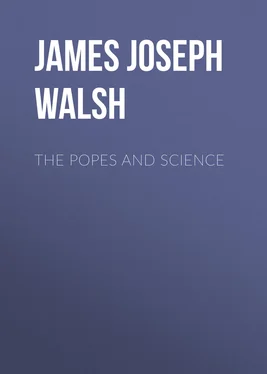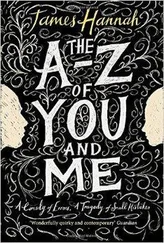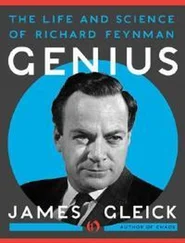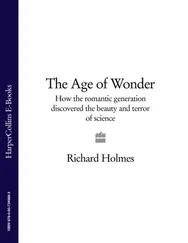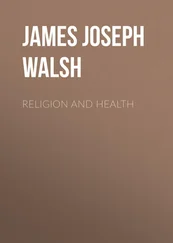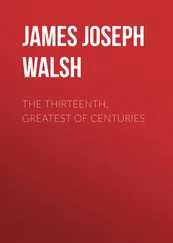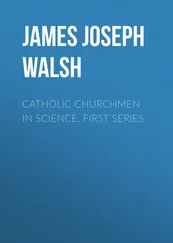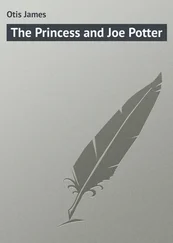James Walsh - The Popes and Science
Здесь есть возможность читать онлайн «James Walsh - The Popes and Science» — ознакомительный отрывок электронной книги совершенно бесплатно, а после прочтения отрывка купить полную версию. В некоторых случаях можно слушать аудио, скачать через торрент в формате fb2 и присутствует краткое содержание. Жанр: foreign_prose, foreign_religion, foreign_antique, на английском языке. Описание произведения, (предисловие) а так же отзывы посетителей доступны на портале библиотеки ЛибКат.
- Название:The Popes and Science
- Автор:
- Жанр:
- Год:неизвестен
- ISBN:нет данных
- Рейтинг книги:4 / 5. Голосов: 1
-
Избранное:Добавить в избранное
- Отзывы:
-
Ваша оценка:
- 80
- 1
- 2
- 3
- 4
- 5
The Popes and Science: краткое содержание, описание и аннотация
Предлагаем к чтению аннотацию, описание, краткое содержание или предисловие (зависит от того, что написал сам автор книги «The Popes and Science»). Если вы не нашли необходимую информацию о книге — напишите в комментариях, мы постараемся отыскать её.
The Popes and Science — читать онлайн ознакомительный отрывок
Ниже представлен текст книги, разбитый по страницам. Система сохранения места последней прочитанной страницы, позволяет с удобством читать онлайн бесплатно книгу «The Popes and Science», без необходимости каждый раз заново искать на чём Вы остановились. Поставьте закладку, и сможете в любой момент перейти на страницу, на которой закончили чтение.
Интервал:
Закладка:
After this practically every Pope in this century has some special benefaction for anatomy to his credit. Pope Paul IV. (1555-59) called Columbus to Rome and gave him every opportunity for the development of his original genius in anatomical research. Columbus had succeeded Vesalius at Padua and had been tempted from there to Pisa by the duke who wished to create in that city a university with the most prominent teachers in every department that there was in Italy, yet it was from this lucrative post that Pope Paul IV. succeeded in winning Columbus. Quite apart from what we know of Columbus's career at Rome and his successful investigation on the cadaver of many anatomical problems, perhaps the best evidence of the friendly relations of the Popes to him and to his work is to be found in the fact that, first Columbus himself, and then after his death his sons, in issuing their father's magnificent work De Re Anatomica, dedicated it to the successor of Pope Paul IV., the reigning Pope Pius IV. In the meantime Cardinal Della Rovere had brought Eustachius to Rome to succeed Columbus.
Under Sixtus V., who was Pope from 1585 to 1590, the distinguished writer on medicine, and especially on anatomy, Piccolomini, published his lectures on anatomy with a dedication to that Pope. It is well known that the relations between the professor of anatomy at the Papal Medical School and the Pope were very friendly. As was the case with regard to Colombo or Columbus, so also with Caesalpinus. Columbus was the first to describe the pulmonary circulation. Caesalpinus is generally claimed by the Italians to have made the discovery of the circulation of the blood throughout the body before Harvey. Columbus had been at Pisa and was tempted to come to Rome. Caesalpinus had also been at Pisa until Clement VIII. held out inducements that brought him to Rome. Clement is the last Pope of the century, but Von Töply mentions five Popes in the next century who were in intimate relations with distinguished investigators into medical subjects and whose names are in some way connected with some of the most noteworthy teaching and writing in medical matters during the seventeenth century.
It will be readily seen what a caricature of the life of Vesalius is Prof. White's paragraph, if one compares it with the following paragraph taken from so readily available an historical source as the article on the History of Anatomy, by Prof. Turner, of Edinburgh, in the first volume of the Encyclopaedia Britannica. The distinguished Scotch anatomist who so worthily filled the chair of anatomy at the University of Edinburgh says with regard to Berengar of Carpi, who was the professor of anatomy at Bologna thirty-five years before Vesalius's time, that, "In the annals of medicine Berengar's name will be remembered as one of the most zealous and eminent in cultivating the anatomy of the human body. It was long before the anatomists of the following age could boast of equalling him. His assiduity was indefatigable, and he declares that he dissected above one hundred human bodies." This should be enough, it seems to me, to settle the question that anatomy was permitted very freely before Vesalius's time. Professor Turner's authority in such a matter is above all suspicion. He knew the history of anatomy.
If more evidence be needed, compare with President White's fantastic sketch of Vesalius the following sketch of his great contemporary, Columbus or Colombo, to whose anatomical investigations we owe the discovery of the pulmonary circulation:
"The fame of Columbus as an anatomical teacher was exceedingly great and widespread. Students were attracted to the universities where he professed, from all quarters and in large numbers. He was an ardent student of his favorite science and was imbued with the genius and enthusiasm of an original investigator. He was not satisfied with the critical examination of mere structure, but extended his researches into the more subtle, difficult and important investigation of the physiological function. He has been most aptly styled the Claude Bernard of the sixteenth century. The work of Columbus is a masterpiece of method and purity of style, as well as on account of its richness in facts and observations. He spent over forty years in these studies and researches. He dissected an extraordinary number of human bodies. It must have been an age of remarkable tolerance for scientific investigation, for in a single year he dissected no less than fourteen bodies. He also entered the crypts and catacombs of ancient churches, where the bones of the dead had been preserved and had accumulated century after century, and there, with unwearied care, he handled and compared over a half million of human skulls."
This account was written by Dr. George Jackson Fisher in his "Historical and Bibliographical Notes" for the Annals of Anatomy and Surgery (Brooklyn, 1878-1880). All the material that Dr. Fisher used in his sketch is to be found in Roth's "Life of Vesalius," p. 256. Now, Columbus was a contemporary of Vesalius, and worked with him at Bologna. The years of their lives correspond almost exactly. When Vesalius left Padua to become the royal physician to Charles V., it was Columbus who succeeded him. Later he taught also at Pisa. Then, strange as it may seem for those who have put any faith in Dr. White's excursion into medical science, he was invited to become Professor of Anatomy at the Papal University at Rome, and it was while there that he had as many as three hundred students present at his demonstrations in anatomy and there that he did fourteen dissections in one year. The pretense that there was any ecclesiastical objection to dissection becomes absolutely farcical when one compares the life of Vesalius sketched by President White with a motive, and the life of his contemporary and successor, Columbus, by an unbiased physician, whose only idea was to bring out the facts.
According to Prof. White's opinion, Vesalius dedicated his work to Charles V. to shield himself as far as possible, and after this gave up his anatomical studies in Italy to put himself under the protection of Charles V.
Vesalius's successor, Columbus, did not have to do any such thing. Instead, he went down to Rome, and under the protection of the Popes continued to carry on his anatomical work there.
When Charles V. died, however, according to President White, a new weapon was forged against Vesalius. Vesalius was charged with dissecting a living man. President White hints that "the forces of ecclesiasticism united against the innovators of anatomy, and either from direct persecution or from indirect influences Vesalius became a wanderer." Just what that means I do not know. President White does not say that he was exiled, though that idea is implied. There is a great deal of doubt about this charge of Vesalius having made an autopsy on a living person. Roth discusses various versions. The whole thing seems to be a trumped-up story; but supposing it true, would it not be only proper that a man who made an autopsy on a living person should be brought before the court? He certainly would in our day in any civilized country. Professor Foster, of the University of Cambridge in England, following the lead of President White in this matter, blames the Inquisition for instituting the prosecution. If this were true, no more proof would be needed that the Inquisition was a civil and not a religious institution, since after all the killing of a man by a premature autopsy is a plain case of homicide.
The fact of the matter seems to be that Vesalius, who had not been very well in the unsuitable climate of Madrid, made the trip to the Holy Land, partly for reasons of health, but partly also for reasons of piety. While returning he was shipwrecked on the island of Zante and died from exposure. Vesalius had been born in Brabant, at that time one of the most faithful Catholic countries in Europe. Like most of the other great men of his time, the reformation utterly failed to tempt him from his adhesion to the Catholic Church. His greatest colleagues in anatomy and in medicine were Italians, most of whom were in intimate relations with the Catholic ecclesiastics of the time and continued this intimacy in spite of the disturbing influences that were abroad. Many of these men will be mentioned in our account of the Papal Medical School and of the Papal Physicians during the next two or three centuries. The distinguished anatomists and physicians of France in Vesalius's time were quite as faithful Catholics as he was. Even Paracelsus, the Swiss, whose thorough-going independence of mind would, it might naturally seem, have tempted him to take up with the reformed doctrines, had no sympathy with them at all. He recognized the abuses in the Church, but said that Luther and the so-called reformers were doing much more harm than good, and that until they were gotten rid of no improvement in ecclesiastical matters could be looked for. When Paracelsus came to die he left his money mainly to the Shrine of the Blessed Virgin in his native town of Einsiedeln and for masses for his soul. Since their time most of the distinguished medical scientists have been quite as faithful in their Catholicity as these two great medical colleagues of the Renaissance period. While medicine is supposed to be unorthodox in its tendencies, the really great thinkers in medicine, the men to whose names important discoveries in the science were attached, were not only faithful believers in the doctrines of Christianity, but were much more often than has been thought even devout Catholics.
Читать дальшеИнтервал:
Закладка:
Похожие книги на «The Popes and Science»
Представляем Вашему вниманию похожие книги на «The Popes and Science» списком для выбора. Мы отобрали схожую по названию и смыслу литературу в надежде предоставить читателям больше вариантов отыскать новые, интересные, ещё непрочитанные произведения.
Обсуждение, отзывы о книге «The Popes and Science» и просто собственные мнения читателей. Оставьте ваши комментарии, напишите, что Вы думаете о произведении, его смысле или главных героях. Укажите что конкретно понравилось, а что нет, и почему Вы так считаете.
